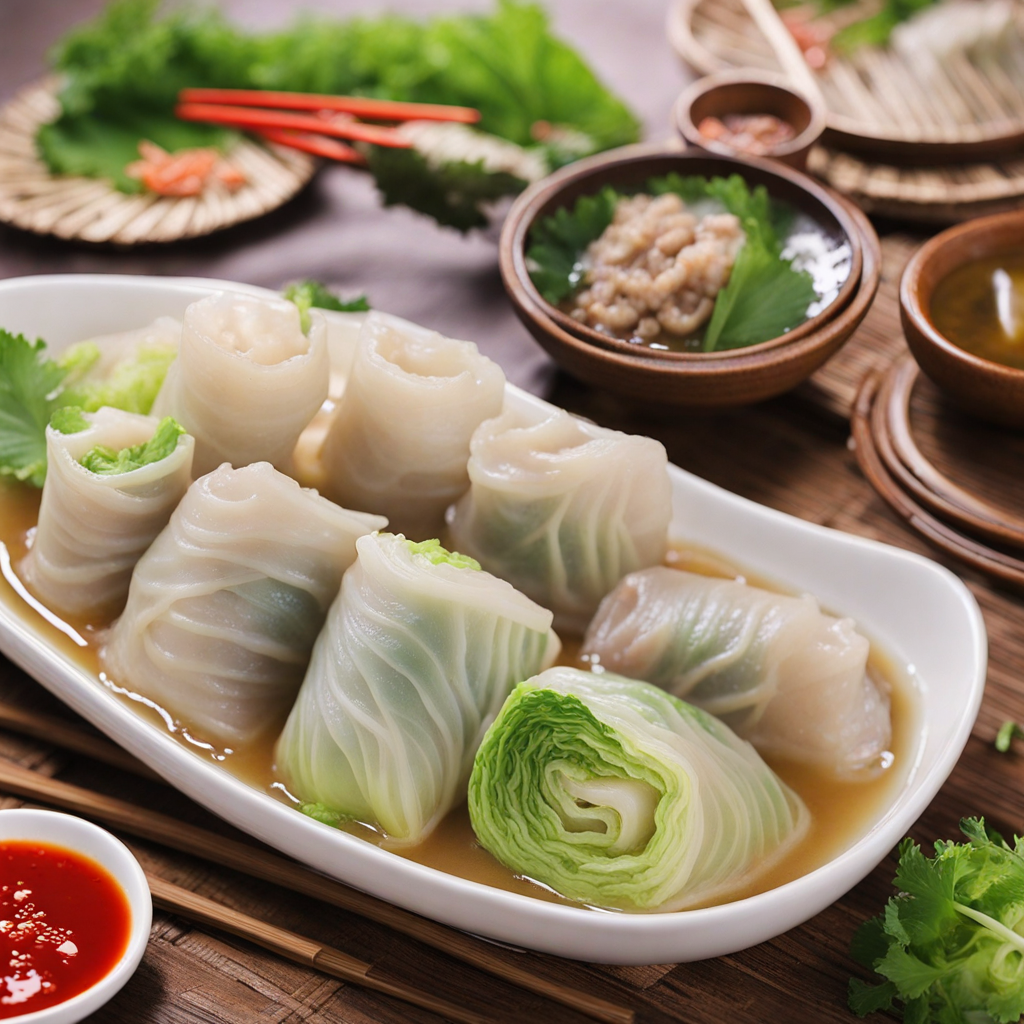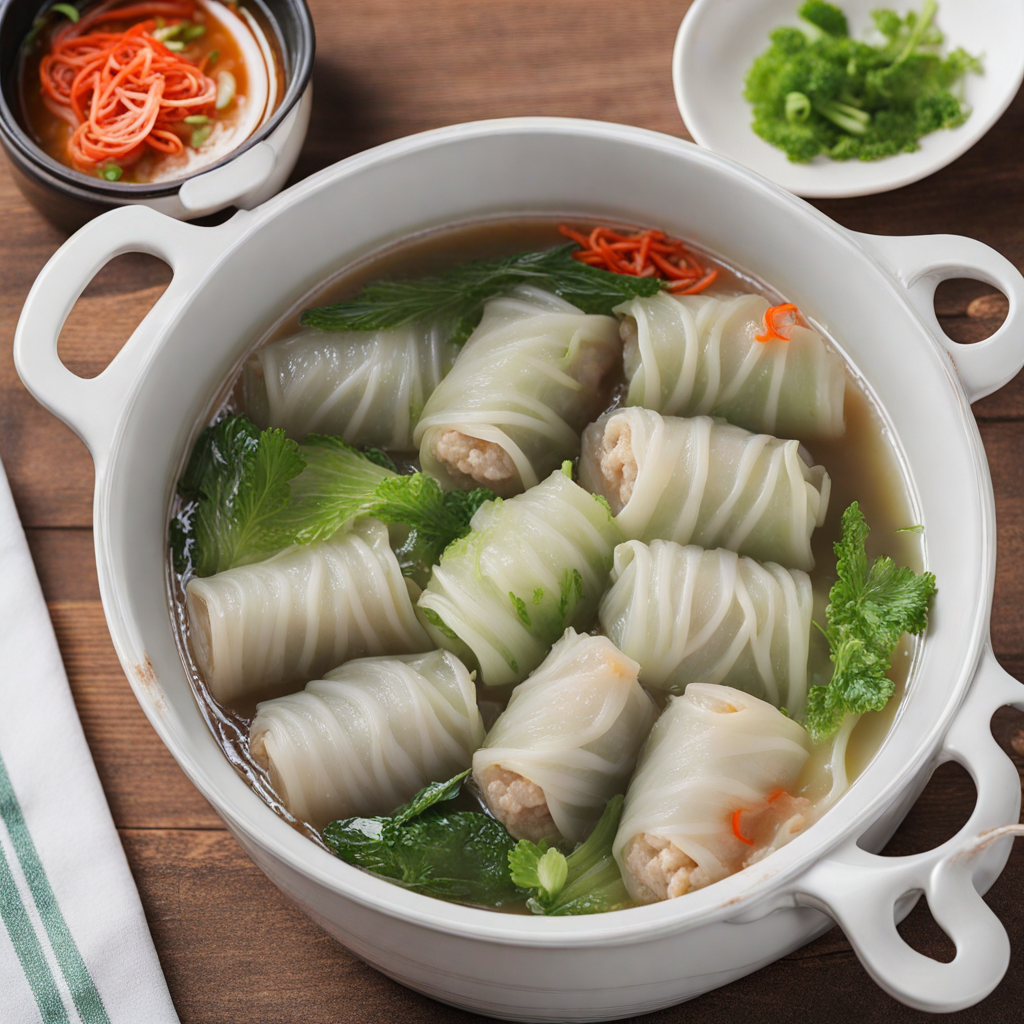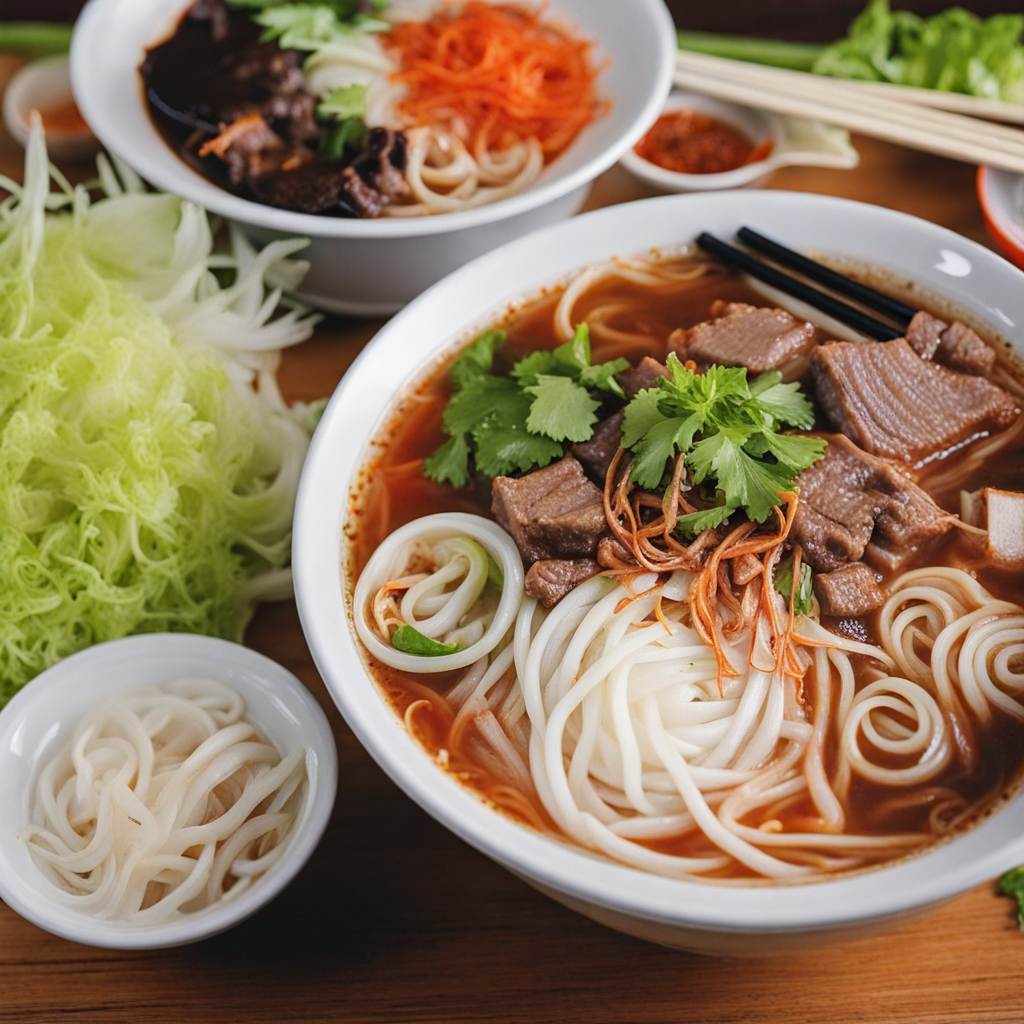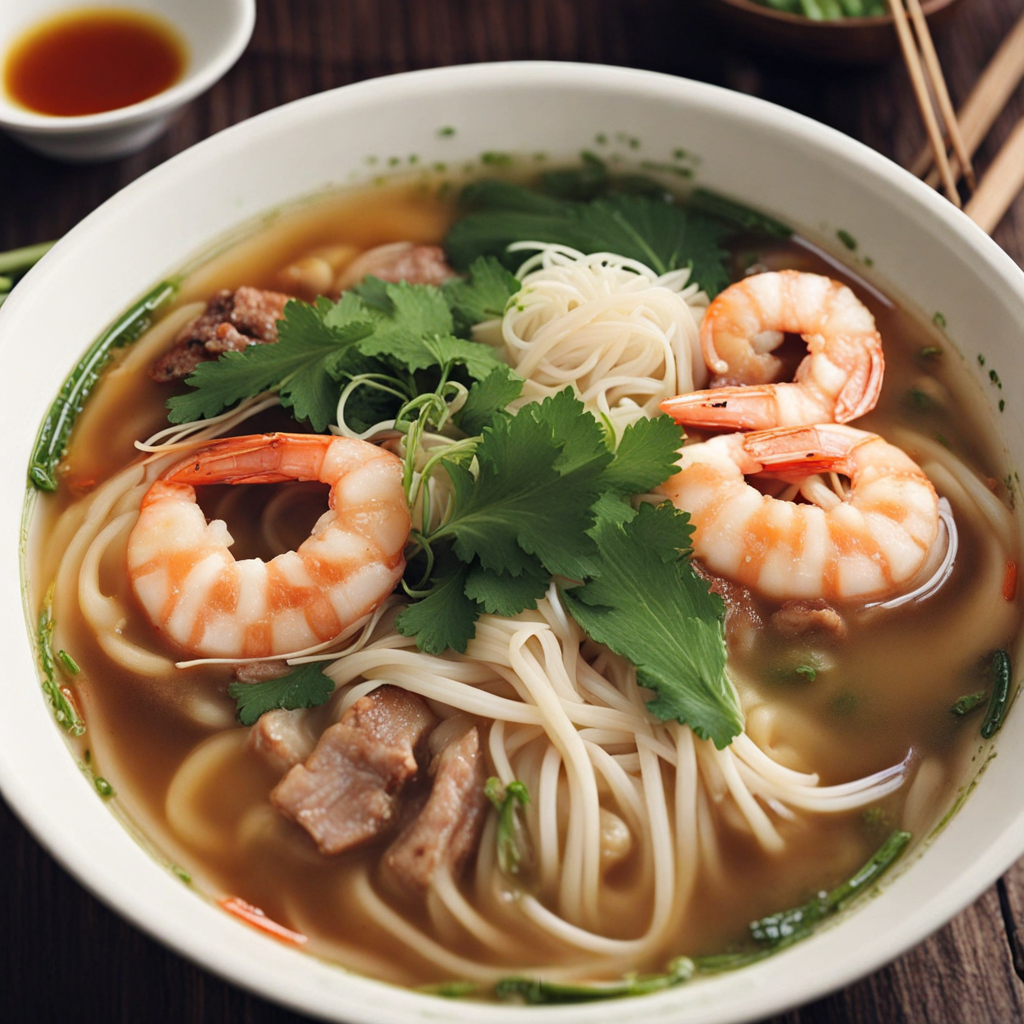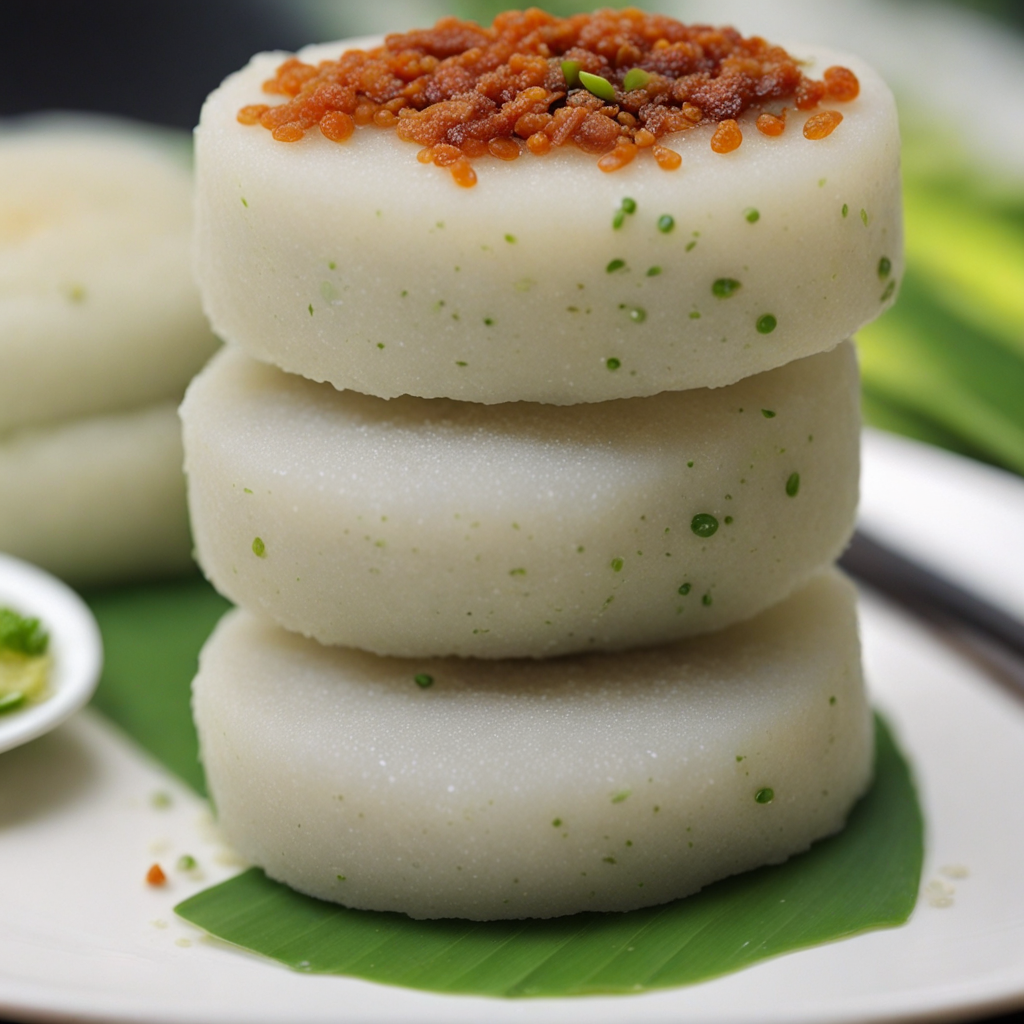Canh Bap Cai Cuon Thit
Canh Bap Cai Cuon Thit is a delightful Vietnamese dish that combines the fresh flavors of vegetables with the savory richness of meat. At its core, the dish features steamed cabbage leaves that are delicately wrapped around a filling of seasoned ground pork or beef. The cabbage not only adds a beautiful green hue but also a subtle sweetness that balances the savory meat. These rolls are often served in a flavorful broth, made with a combination of chicken or pork stock, herbs, and spices, which enhances the overall taste and provides a comforting element to the dish. As you take your first bite, you’ll experience the tender, juicy texture of the meat mingling with the crispness of the cabbage. The broth is light yet aromatic, infused with garlic, lemongrass, and a hint of fish sauce, which is quintessential in Vietnamese cuisine. This interplay of flavors creates a harmonious blend that is both comforting and refreshing, making it a perfect dish for any occasion. The addition of fresh herbs like cilantro or mint can elevate the taste, adding a burst of freshness that complements the hearty filling. Canh Bap Cai Cuon Thit is often served with a side of rice or noodles, allowing you to soak up the delicious broth and savor every bite. It’s a dish that embodies the essence of Vietnamese cooking: fresh ingredients, a balance of flavors, and a sense of community, as it’s often enjoyed in a shared setting with family and friends. Whether you are a seasoned fan of Vietnamese cuisine or a newcomer looking to expand your palate, this dish promises a delightful experience that celebrates the vibrant flavors of Vietnam.
How It Became This Dish
Canh Bắp Cải Cuộn Thịt: A Culinary Journey Through Vietnam Origin and Historical Context Canh Bắp Cải Cuộn Thịt, often translated as Cabbage Rolls with Pork, is a beloved dish in Vietnamese cuisine that reflects the country’s agricultural heritage and the influence of historical migrations. The dish primarily consists of cabbage leaves stuffed with a savory mixture of minced pork, herbs, and seasonings, which are then gently simmered in a flavorful broth. The origins of cabbage rolls can be traced back to various cultures, including Eastern European cuisines where they are known as "golabki." However, in Vietnam, the dish took on a unique identity influenced by local ingredients and culinary practices. Cabbage, particularly the round-headed variety, is abundant in Vietnam and thrives in the cooler northern regions such as Hanoi and Sapa. This suitability for the climate allowed cabbage to flourish as a staple vegetable, thus making it a natural choice for stuffing. The use of pork in Canh Bắp Cải Cuộn Thịt can be attributed to the country's historical reliance on pork as the primary meat source. In Vietnamese culture, pork symbolizes prosperity and is central to many traditional dishes. The incorporation of local herbs such as cilantro and green onions adds a distinct flavor profile that sets this dish apart from its international counterparts. Cultural Significance Canh Bắp Cải Cuộn Thịt holds a special place in Vietnamese culture, particularly within family settings and during festive occasions. It is often prepared for gatherings, family reunions, and celebrations, not only due to its delicious taste but also because it represents the care and effort that goes into home-cooked meals. The act of rolling the cabbage leaves and preparing the filling is often a communal activity, bringing family members together in the kitchen. In Vietnamese households, food is more than mere sustenance; it is an expression of love, familial bonds, and cultural identity. The preparation of Canh Bắp Cải Cuộn Thịt allows families to connect with their heritage while also adapting the dish to their personal tastes. It exemplifies the concept of “nhà hàng xóm” or neighborly cooking, where families share recipes and techniques, creating slight variations that reflect local preferences and available ingredients. The dish also plays a role in the broader context of Vietnamese cuisine, which emphasizes balance and harmony. The combination of the savory filling, the tender cabbage, and the aromatic broth showcases the fundamental principles of Vietnamese cooking—namely, the interplay of flavors, colors, and textures. Development Over Time As Vietnam underwent significant changes throughout the 20th century, from colonial influences to the wars that shaped the nation, the culinary landscape also evolved. In urban areas, the influence of globalization began to seep into traditional Vietnamese cooking, leading to innovative adaptations of classic dishes. While Canh Bắp Cải Cuộn Thịt has remained a staple in many households, its preparation has seen variations that reflect contemporary tastes and lifestyles. In the late 20th century, following the economic reforms known as Đổi Mới, there was a resurgence of interest in traditional Vietnamese dishes, including Canh Bắp Cải Cuộn Thịt. The focus shifted towards fresh, local ingredients, and the dish became a symbol of the farm-to-table movement that encouraged sustainable practices. Chefs and home cooks alike began experimenting with different fillings, incorporating ingredients such as shrimp, chicken, or even vegetarian alternatives like tofu, catering to a wider array of dietary preferences. Regional variations also emerged, with northern regions favoring a simpler, broth-based preparation, while southern regions often include more spices and herbs in the filling. The dish's adaptability has allowed it to be embraced across Vietnam, each region adding its own flair while maintaining the core essence of the recipe. The rise of Vietnamese cuisine on the global stage has further contributed to the popularity of Canh Bắp Cải Cuộn Thịt. Vietnamese restaurants worldwide frequently feature this dish on their menus, introducing it to international diners who may be unfamiliar with the intricacies of Vietnamese cooking. It has become a symbol of the rich culinary tapestry of Vietnam, showcasing the balance of flavors and the importance of fresh ingredients. Contemporary Relevance Today, Canh Bắp Cải Cuộn Thịt continues to be a cherished dish in Vietnam, embodying both tradition and innovation. Its presence in family meals and festive occasions illustrates its cultural significance, while its adaptability reflects the changing dynamics of Vietnamese society. The resurgence of interest in home cooking, particularly in the wake of the COVID-19 pandemic, has led many to revisit traditional recipes. Canh Bắp Cải Cuộn Thịt has found its way back into kitchens, serving as a comforting reminder of family gatherings and communal meals. Online cooking classes and social media platforms have also played a role in sharing recipes and techniques, ensuring that the art of making this beloved dish is passed down through generations. Moreover, as the world becomes more health-conscious, Canh Bắp Cải Cuộn Thịt appeals to those seeking nutritious meals. The dish is low in carbohydrates and high in protein and vitamins, making it a popular choice among health enthusiasts. Its versatility allows for various adaptations, catering to the increasing demand for gluten-free and plant-based options. Conclusion Canh Bắp Cải Cuộn Thịt is more than just a dish; it is a reflection of Vietnam’s rich history, cultural significance, and ever-evolving culinary landscape. From its humble origins rooted in local agriculture to its place on the international stage, it tells a story of resilience, adaptation, and the enduring importance of food in connecting people to their heritage. As it continues to evolve, this dish remains a beloved symbol of Vietnamese culinary identity, cherished by both locals and those who have come to appreciate the vibrancy of Vietnamese cuisine.
You may like
Discover local flavors from Vietnam


